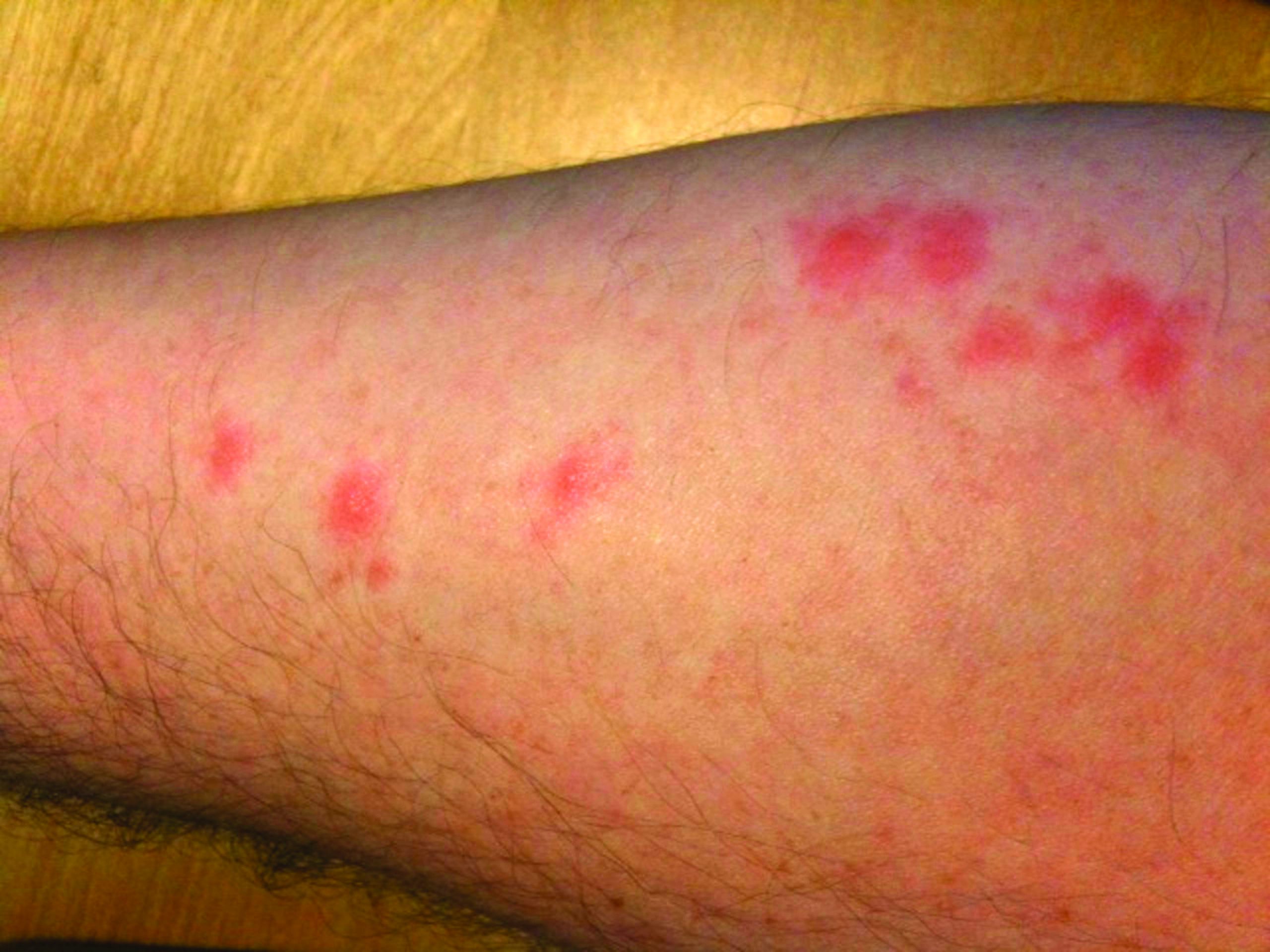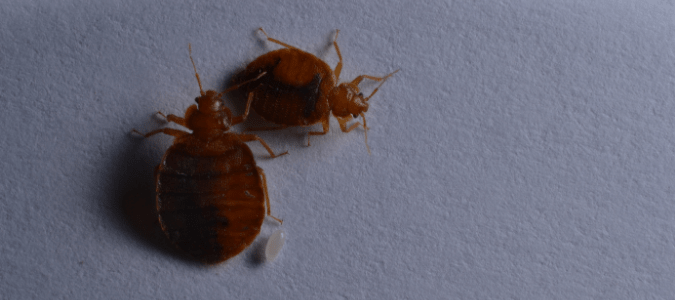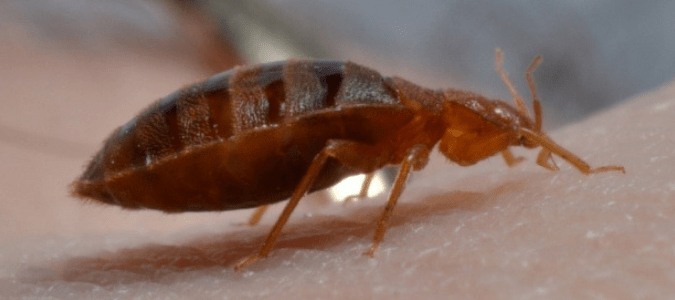We all know that insects outdoors can sting or bite, leaving marks on people’s skin. However, that isn’t the only place you might come across biting bugs. Some of them thrive in and prefer life indoors as well, especially in bed linens and other clothing.
Bed bugs can get at any part of your body. That said, their bites are generally found on the neck, face, hands, arms, legs and shoulders, places where skin may be exposed while asleep. These bites generally show up in clusters of three to five or more and form a sort of zigzag pattern on the body. If you wake up to find little red bumps that weren’t there when you went to bed, your best bet is to call in a licensed pest control professional. They can determine what has invaded your space and get rid of them the best way possible.
Another tricky thing about bed bug bites is that it takes some people up to two weeks to have a reaction. Unfortunately, in that time, a few bed bugs can turn into many more.
Bed Bug Stages
You might see small reddish brown dots on your bedding that could indicate that bed bugs had fed on human blood recently. Small dark dots might be bed bug feces. During the daytime hours, they hide in out-of-the-way places like the seams of a mattress or tucked into the cushions on a bedroom chair. They can even be found in furniture joints or wallpaper openings! When you have a real infestation, you might notice a slightly sweet, musky smell around areas where they gather.
These insects are very small and can be easy to miss, so it is helpful to understand the stages that bed bugs go through in their lifetimes. An adult female can produce about 350 bed bug eggs in her life. And, she feeds (read: bites) more and more so she can support that big family. The growth stages of bed bugs are as follows:
- Eggs (1mm)
- 1st stage nymph (1.5 mm)
- 2nd stage nymph (2 mm)
- 3rd stage nymph (2.5 mm)
- 4th stage nymph (3 mm)
- 5th stage nymph (4.5 mm)
As these eggs grow into the next stages, the nymphs become just slightly more visible. They are clear or a white-yellow shade and still less than five millimeters in length. You are not likely to see them without a microscope or magnifying glass unless they have just fed. This is what gives their abdomen that reddish brown color. Their bodies have three parts, and their antennae have four parts.
Bed bug eggs are pretty hardy, and bed bugs multiply quickly. Under ideal environmental conditions, the population will double in about 16 days. The only way to completely remove a bed bug infestation is by using chemical pesticides, and those can be dangerous if you aren’t trained in their use. A local licensed professional can assess your personal situation and create a pest treatment plan that would be most effective.
Can You Feel a Bed Bug Bite?
Bed bugs generally live within about eight feet of where you sleep, and they can live anywhere from six to 24 months. They usually feed every three to seven days though they can survive many months without feeding if they must. If they have a ready food source—you and your family—you might start to notice telltale signs:
- An achy, burning sensation.
- A raised itchy bump with a clear center.
- A red itchy bump with a dark center and lighter swollen surrounding area.
- Small red bumps or welts in a zigzag pattern or a line.
- Small red bumps surrounded by blisters or hives.
- Areas of skin with raised or flat patches that may look infected.
Chances are you won’t feel their bite when it happens. That’s because bed bugs inject you with a numbing agent and an anticoagulant to stop bleeding at the same type they bite you. Many people do not feel the bite itself or develop clear symptoms other than the dots where the bug bit and some minor, surrounding inflammation and irritation. Others are considered hypersensitive to bites and develop more severe symptoms. The bed bugs’ bites are red and itchy but usually not painful. Sometimes, bites won’t present with any symptoms for 14 days, and once symptoms start they usually are gone in a week or so. The larger danger from bed bug bites is the potential for infection with all of the itching and scratching.
Of course your reaction to the bed bug bite will vary depending on your personal health history and the bit of the bug that snacked on you. If you suspect you were bitten by a bug and notice difficulty breathing, nausea, irregular heartbeat, swollen tongue, blisters or a fever developing, see medical advice and treatment right away.
Save yourself the worry of infection and the hassle of trying to guess what has moved into your sleeping space by contacting a pest control professional right away. They will be able to create a custom pest control plan to help bring you and your family relief.
Getting Rid of Bed Bugs
Just throwing out your mattresses, box springs and linens won’t eliminate the problem, even when followed by the necessary chemical treatment.. Bed bugs can easily hide elsewhere and just find their way back to new items you might bring into the home. Here are a few things you might be asked to do:
- Launder clothing, bedding and window treatments.
- Get enough resealable bags for all your belongings that are in the dressers or closets that share space with affected areas.
- Clean the space top to bottom, ceilings to baseboards.
- Remove all possible clutter from the space. It is hard to treat the room or rooms if the pest professional can’t get to it.
- Any insecticides used in the treatment plan will not penetrate the eggs, which take about two weeks to hatch. A follow-up pest treatment will help get rid of any new nymphs and kick the bugs out completely.
ABC Can Treat Your Home for Bed Bugs
Dealing with bed bugs can take an emotional toll on you and your family. Don’t put up with any more bites. Contact ABC Home & Commercial Services for a customized solution to your bed bug problem.


